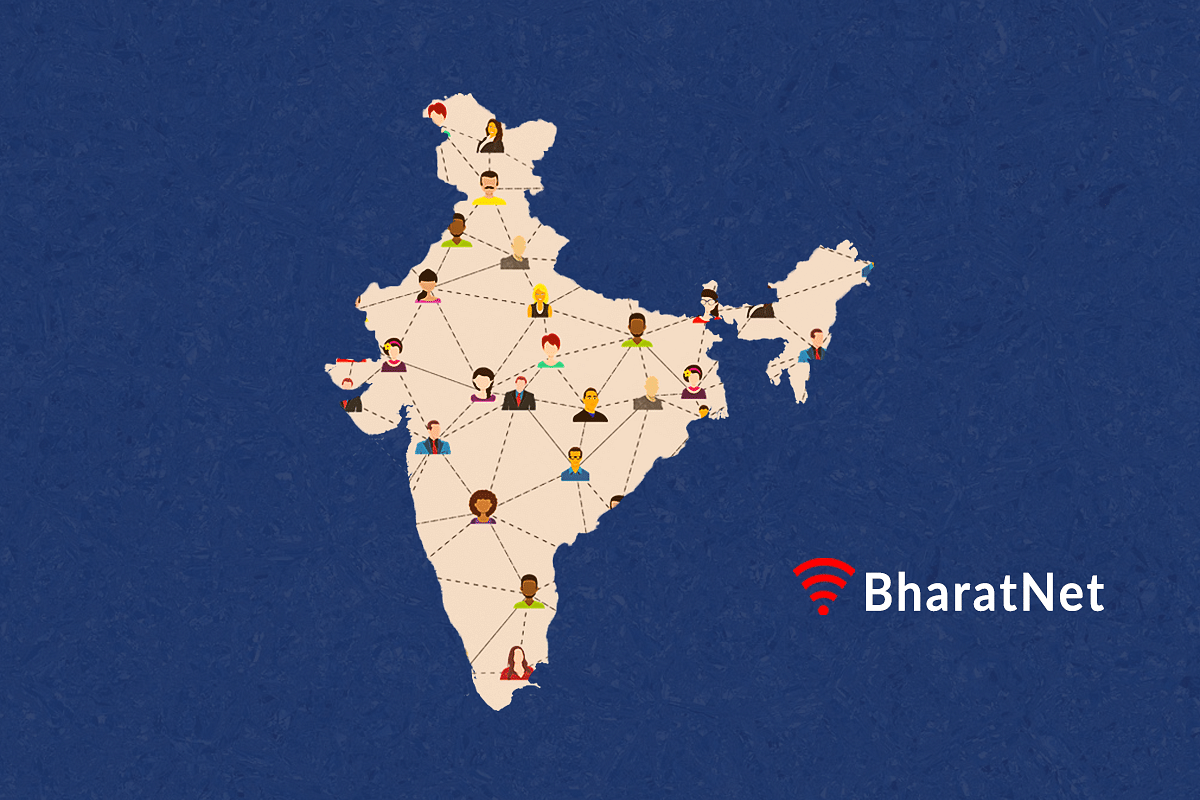Infrastructure
BharatNet And Its Advantages: Centre Set To Begin With Massive Awareness Programme In Rural Areas
- As per reports, the union government is currently hiring branding agencies to conduct public awareness campaigns for the BharatNet project.
- Through these campaigns, the government wants people in villages to understand how to best use the internet in their daily lives.

New initiatives by centre for BharatNet project
The Indian government's BharatNet project—which aims to provide high-speed digital connectivity to rural India at affordable cost, focusing on the socio-economic development in line with the vision of the 'Digital India' programme—has picked up steam under Ashwini Vaishnaw, the new Minister of Telecom and Information Technology.
BharatNet connects service providers like Telecom Service Providers or TSPs and Internet Service Providers or ISPs to blocks and gram panchayats (GPs), multi-system operators (MSOs), local cable operators (LCOs) and government bodies for expanding their Block-to-GP services.
As per the Bharat Broadband Network Limited's (BBNL) website of the project, the offered services to government agencies and service providers include, "Bandwidth: It offers point to point (P2P) and point to multi-point (P2MP) bandwidth from block to GPs using GPON technology; and Dark fiber: on incremental cable: It offers dark fiber on the incremental cable laid by BBNL between Fiber Point of Interconnect (FPOI) and GPs."
However, according to the latest report by News18, the government is currently hiring branding agencies to conduct public awareness campaigns for the project, and they want people in villages to understand how to best use the internet in their daily lives. Broadband penetration and proliferation are also predicted to boost employment and income generation, both directly and indirectly, the report added.
As per the report, a document says: "The objective of the campaigns is to generate awareness about BharatNet and to promote its advantages and benefits to the public and showcase the intended benefits to the rural population in terms of awareness and affordable access to government welfare schemes, citizen-centric services, e-learning, telemedicine, e-market, business to business services etc."
It also stated that for the 'ease of living' of villages, the BharatNet project would host a multitude of government services.
The document noted that the Indian government intends for BharatNet to provide high-speed digital connectivity to rural India at affordable prices to facilitate the spread of broadband service in rural areas and foster socio-economic development in line with the vision of the 'Digital India' programme. It also says: "This will transform India into a digitally empowered society and knowledge economy."
Additionally, it states that the campaign should be appealing, eye-catching and centred on creatives that successfully explain the project's effects. Promotional materials such as pamphlet flyers will be delivered in villages around the country, social media campaigns will be run, and a media campaign featuring hoardings and posters will be prepared in regional languages.
By August 2021, the BharatNet project was supposed to have covered 2.5 lakh GPs across the country with optical fibre. However, due to a slew of difficulties, including Covid-19, the deadline was missed. The government had told Parliament this March that only about 1.5 lakh GPs had been service ready so far.
PM Narendra Modi said on 15 August 2020 that the project's scope would be expanded to encompass all 6.3 lakh villages in the country in the following 1000 days by 2023. In July this year, the government issued a global procurement for work worth Rs 29,500 crore in 16 states as part of the BharatNet initiative, which aims to connect additional 3.61 lakh villages using optical fibre.
However, soon after taking charge of the Telecom and IT Ministry, Vaishnaw conducted a thorough examination of the project. The BharatNet project was first implemented by three Central Public Sector Undertakings (CPSUs), but the government has recently switched to a public-private partnership (PPP) model to benefit from the private sector's efficiency.
The government said: "The private sector partner is also expected to bring an equity investment and raise resources towards capital expenditure and for operation and maintenance of the network. Hence, the PPP model for BharatNet will enhance efficiency, quality of service, consumer experience and leverage private sector expertise, entrepreneurship and capacities for accelerating the achievement of digital India. This will be in addition to substantial savings of public money."
The BBNL is the Middle Mile Network service provider for providing access to BSNL, TSPs, ISPs, MSOs, LCOs and government agencies for extending their services from Block to GPs. The website says that Individual customers interested in Wi-Fi, Broadband, or Internet connections should contact Last-Mile Service Providers in the areas, such as BSNL, TSPs, and ISPs/CSC.
BBNL says: "Service providers needs to work out their requirement of BharatNet Bandwidth or dark fiber based on the information available on the website about BharatNet and their assessment of customer demand. List of service ready GPs along with Lat & Long data may be referred for BharatNet bandwidth. Block level line diagrams may be referred for BBNL's Dark Fibre. BBNL may also facilitate field level surveys if specific requirement is given by the service provider."
Introducing ElectionsHQ + 50 Ground Reports Project
The 2024 elections might seem easy to guess, but there are some important questions that shouldn't be missed.
Do freebies still sway voters? Do people prioritise infrastructure when voting? How will Punjab vote?
The answers to these questions provide great insights into where we, as a country, are headed in the years to come.
Swarajya is starting a project with an aim to do 50 solid ground stories and a smart commentary service on WhatsApp, a one-of-a-kind. We'd love your support during this election season.
Click below to contribute.
Latest